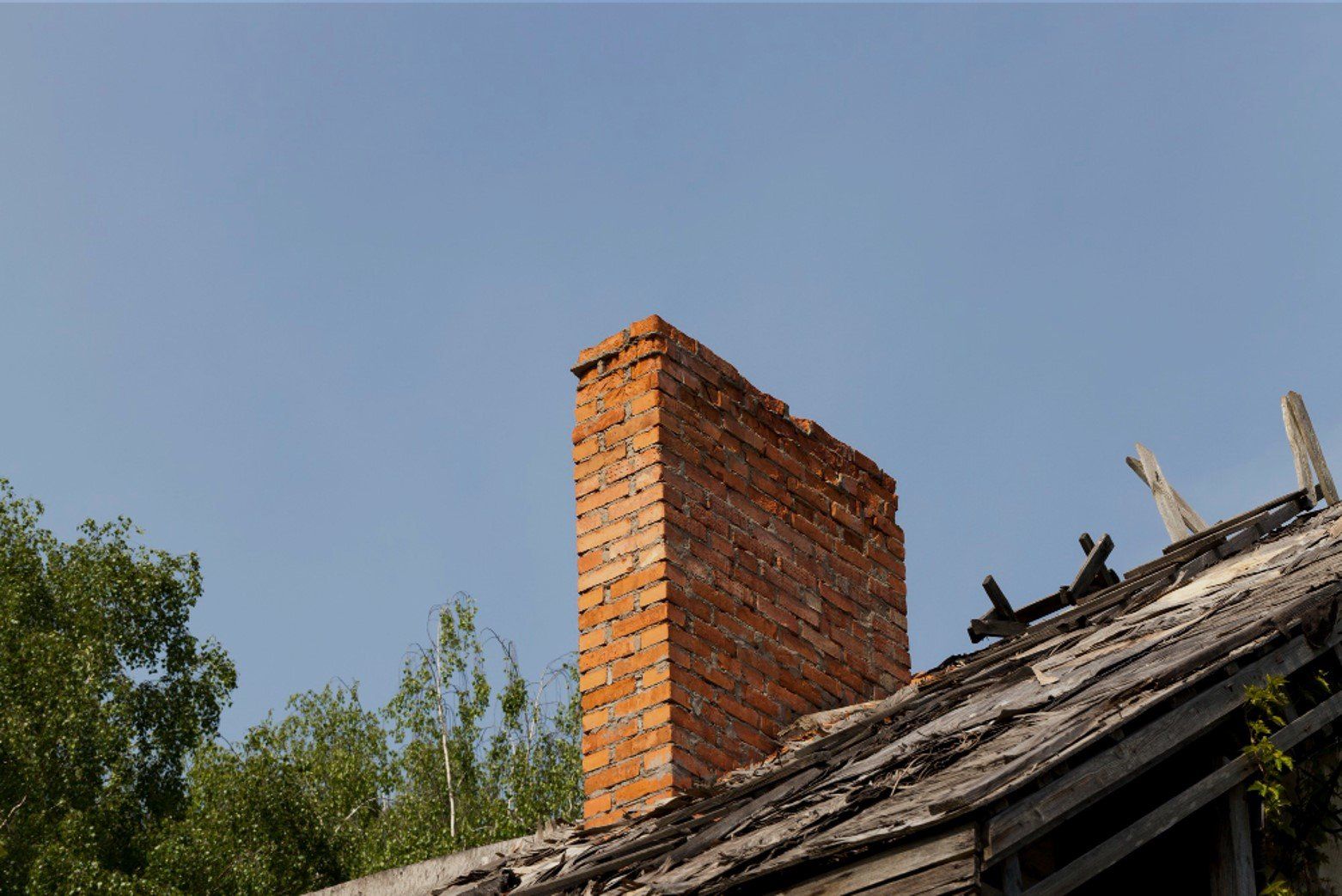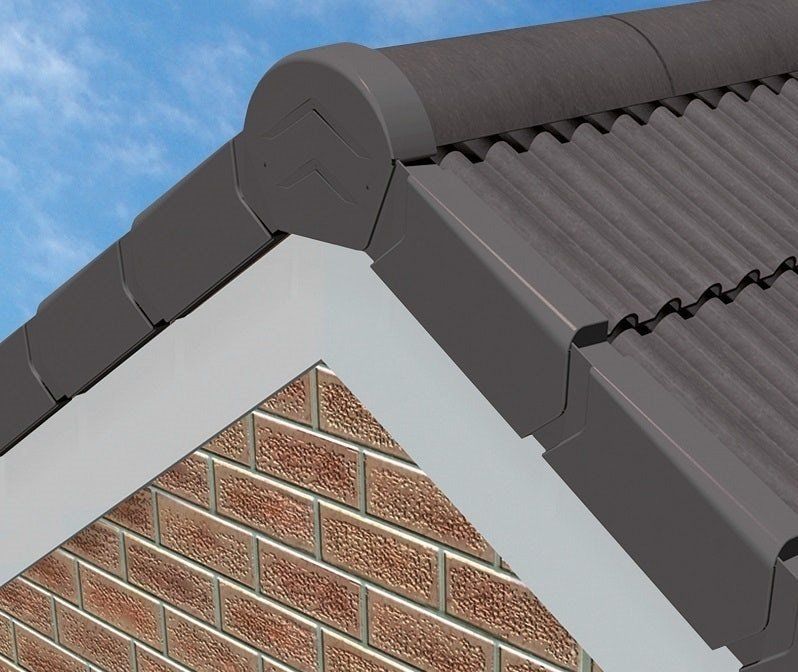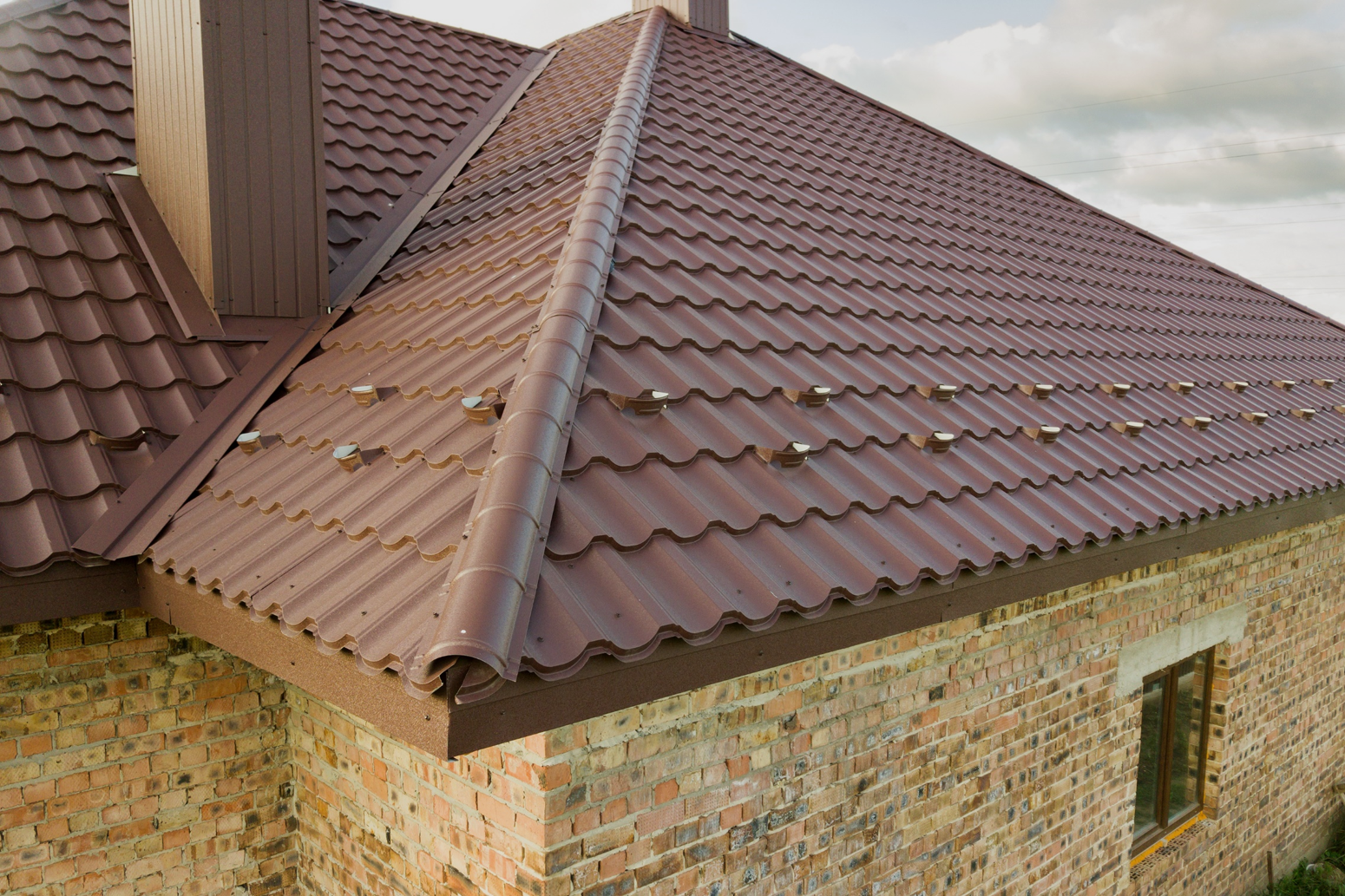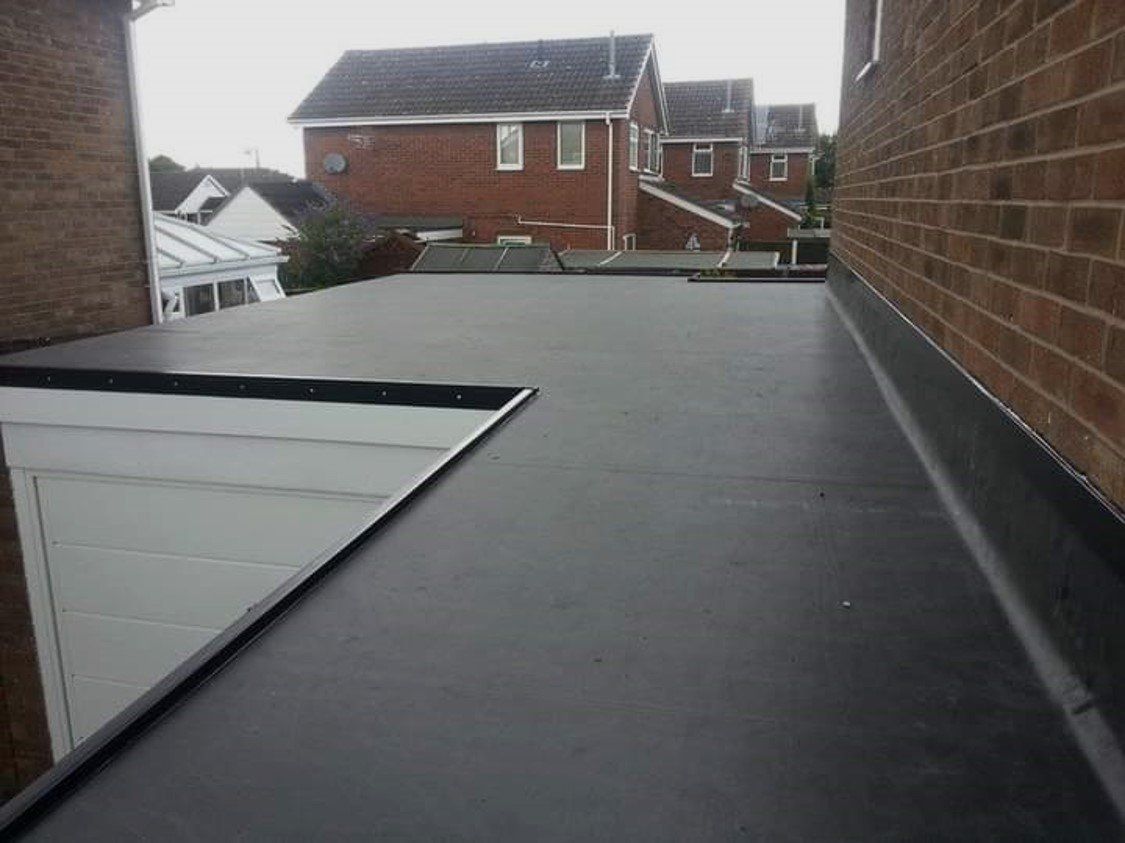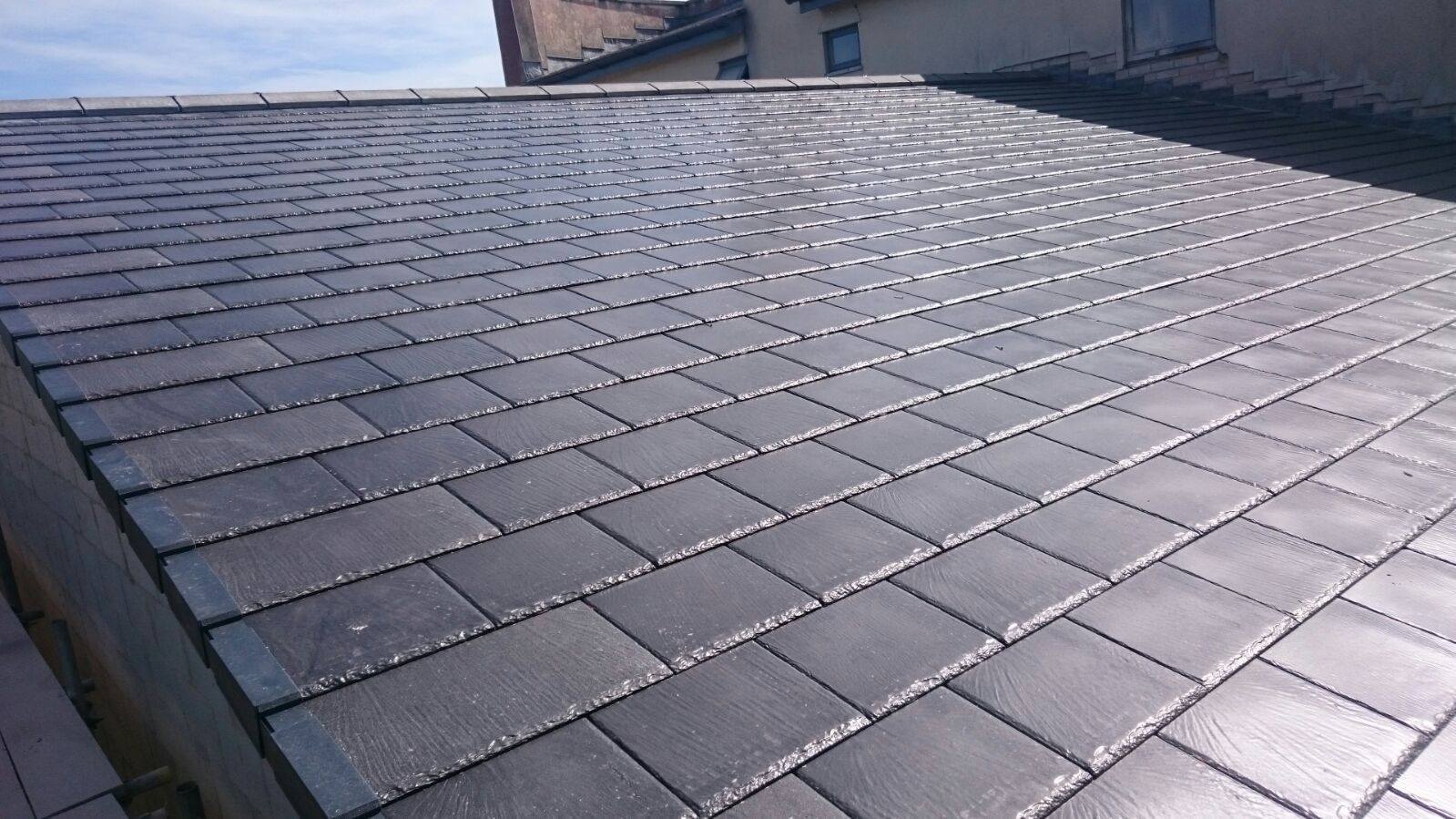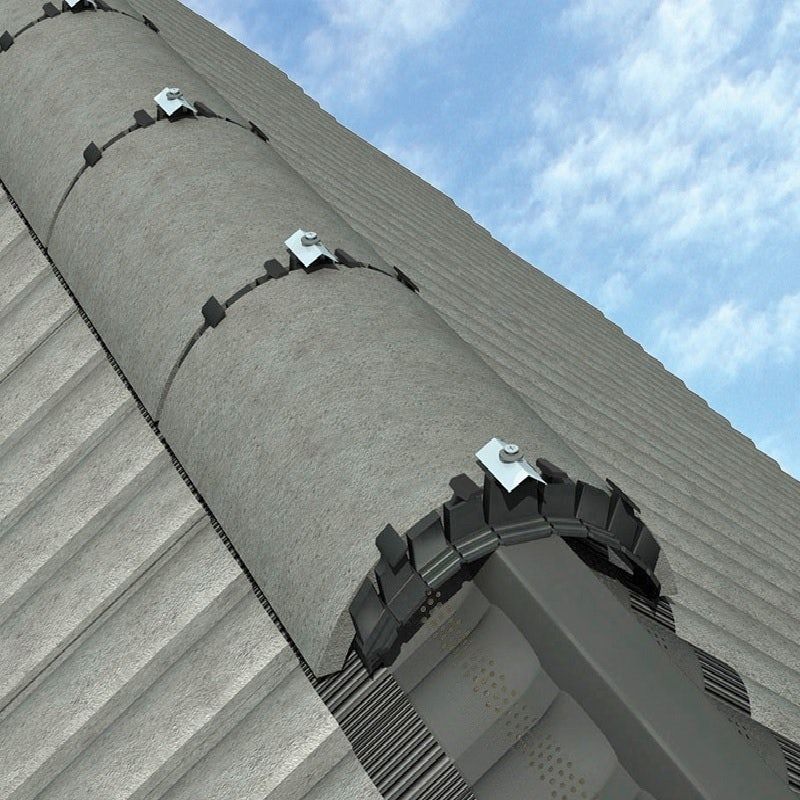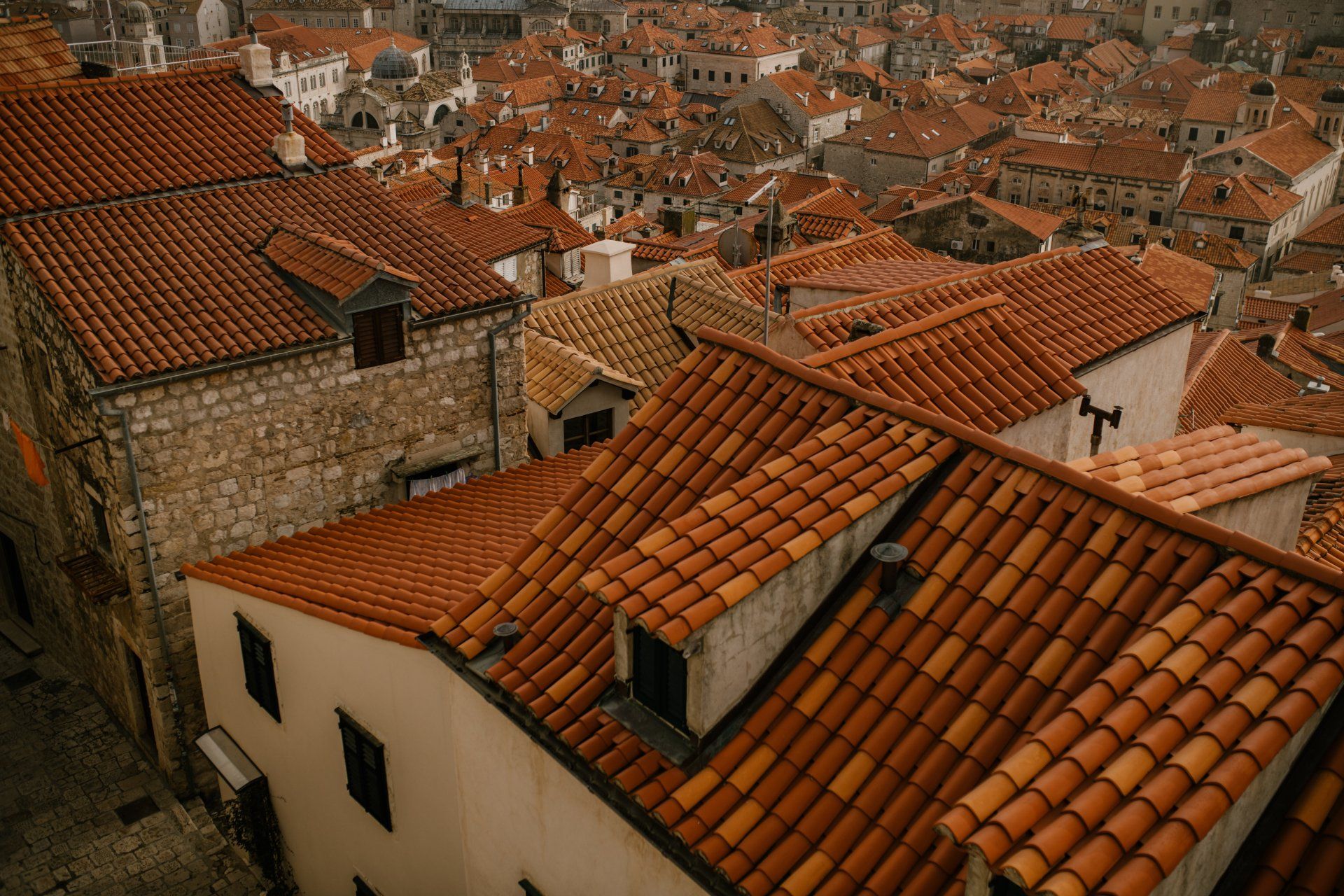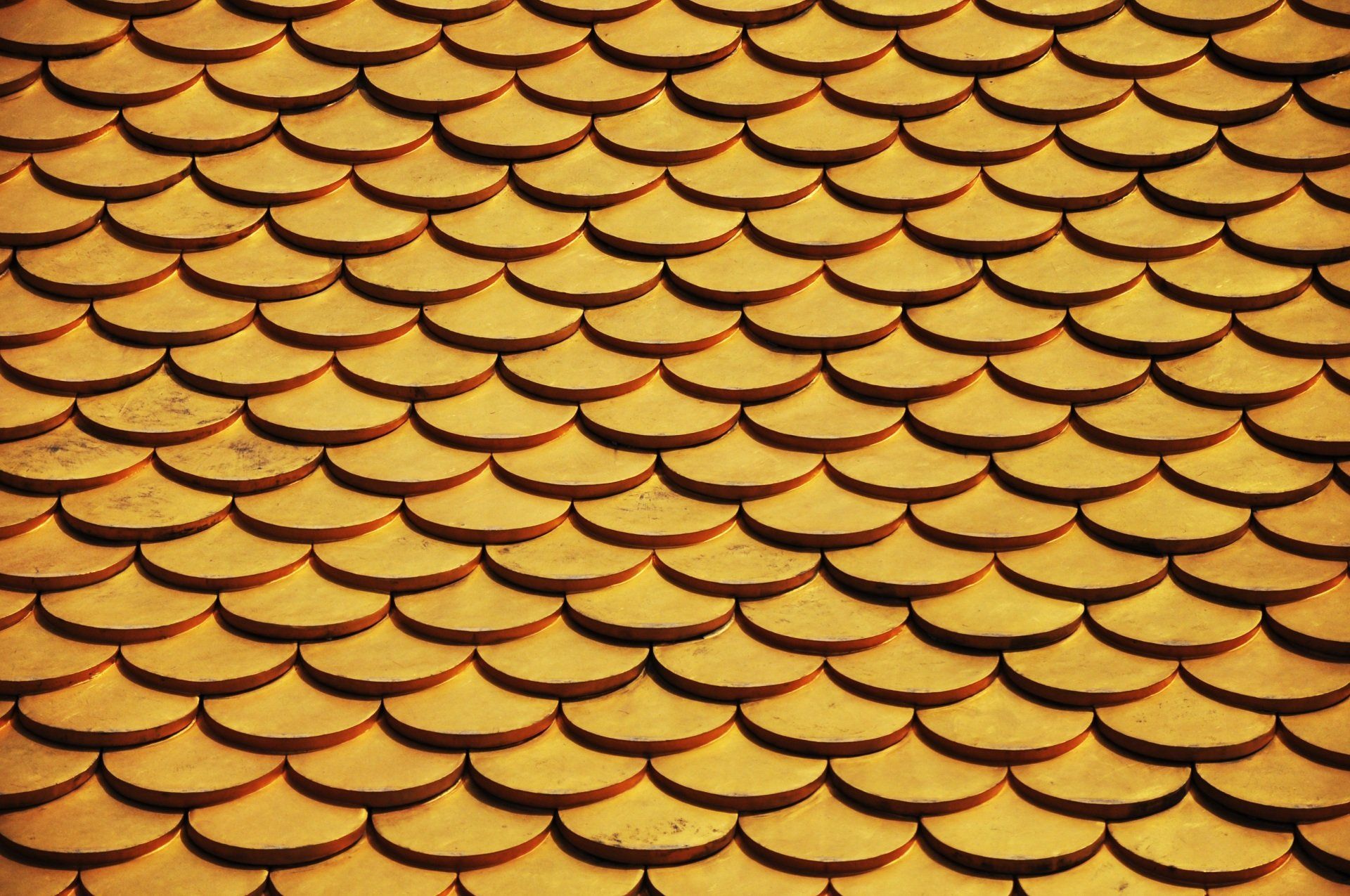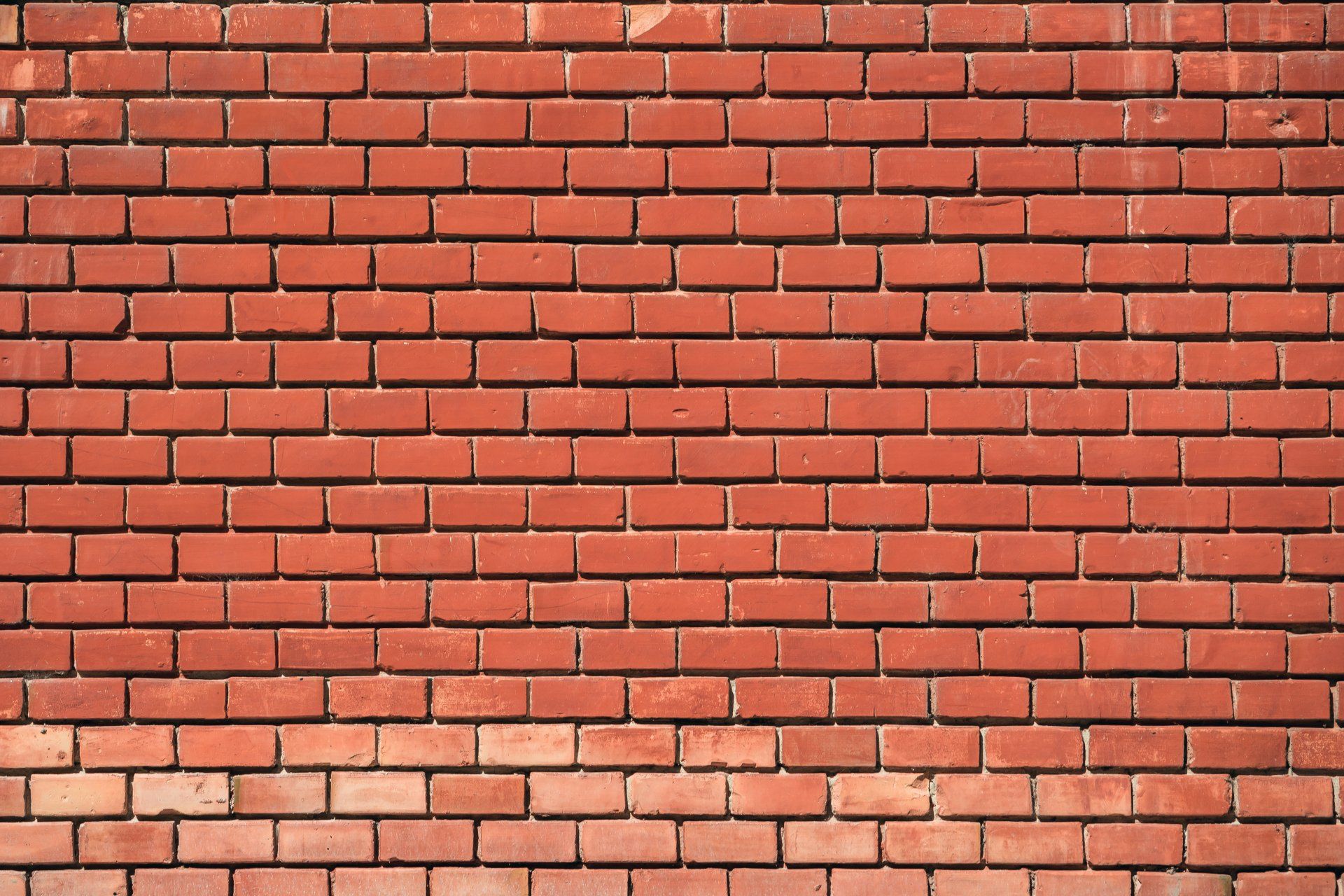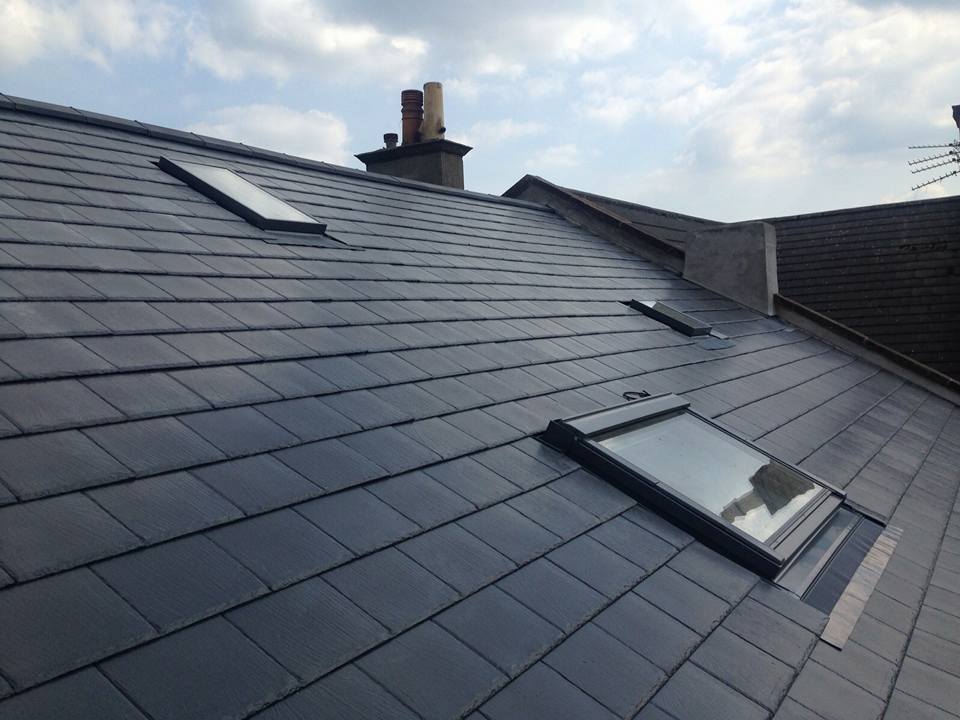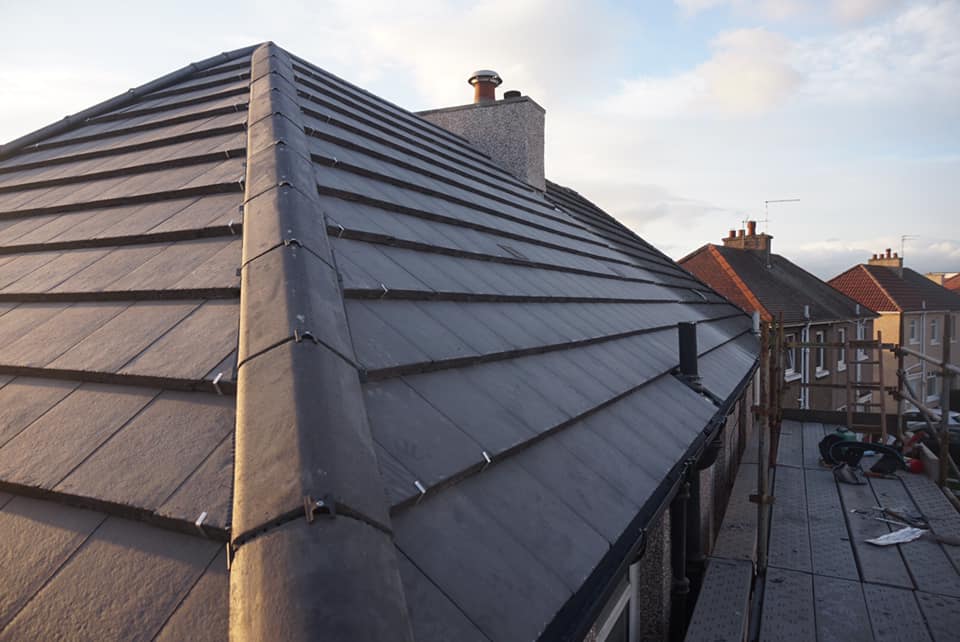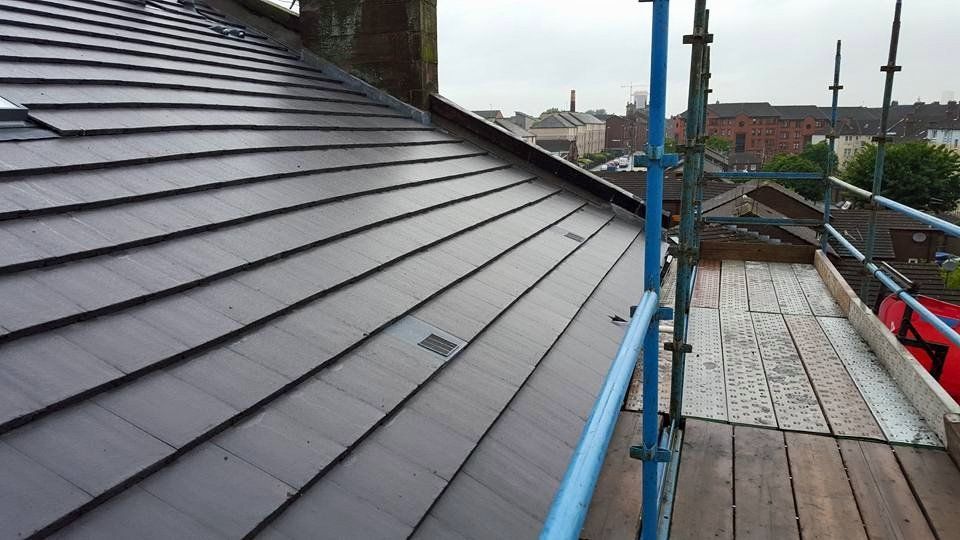Flat Roofing Contractors
All Aspects of Flat Roof Installations
Including:
Felt Roof
EPDM Rubber Roof
GRP Fibreglass Roof
TPO single-ply membrane flat roof
PVC single-ply membrane flat roof
Guauranteed
Our team of experienced flat roof experts have the knowledge and skills to Install the flat roof material of your choice. Call now to arrange your FREE QUOTE and friendly advice
Flat Roof Nottingham - Professional Flat Roofing
Flat roofs are a popular choice for commercial and residential properties. They provide low maintenance, have good drainage, and can last up to 50 years with the right material and proper installation methods.
Trust Roofing Services specialise in all types of flat roof installation and replacement that will be tailored to your requirements. Our team of experienced professionals will perform an on-site inspection of your property before giving you a customised quote that best suits your budget and roofing needs. We use only the highest quality materials for our installations, ensuring that your roof will stand the test of time.
Our flat roof installation services include traditional felt roofs, GRP fibreglass, EPDM Rubber roofs, TPO, PVC, repairs, flashings, insulation replacement, membrane applications, ventilation upgrades, and more. We also offer leak repair services if any issue should arise over time. With our expertise and attention to detail, you can count on us for a strong and durable flat roof that will protect your property from the elements.
We understand that a reliable roof is an important part of any building, which is why we take the time to ensure that each installation meets the highest standards. We’re committed to providing quality workmanship at competitive prices and are available to answer any questions you may have throughout the process.
Contact us today for more information about our flat roof installation services!
Flat Roofs that we do
EPDM Rubber Roofing
EPDM rubber roofing is a popular choice for flat roof installations. It is a durable, waterproof, and cost-effective material that can be installed quickly and easily. Due to its flexibility, EPDM rubber roofing offers superior protection against weather damage and UV rays. The material does not corrode or degrade over time like other roofing materials, making it a great choice for long-term roofing solutions. EPDM rubber roofing is also lightweight and easy to transport and install. Its low maintenance requirements make it an attractive option for homeowners looking for an economical way to protect their homes from the elements.
Additionally, EPDM rubber roofing is available in a variety of colours, making it easy to customise the look of your roof.
EPDM rubber roofing is an affordable solution for flat roofs and can be customised to fit any shape or size. It is highly resistant to tears and punctures and offers excellent waterproofing protection against water damage. With its superior strength and durability, EPDM rubber roofing can stand up to extreme temperatures and UV exposure, making it an ideal choice for homeowners who want a long-lasting roof with minimal maintenance requirements.
EPDM rubber roofing is also fire resistant and has been proven to provide superior protection against fire and extreme weather conditions. Its ability to withstand heat and cold, strong winds, hail, and other elements makes it a great choice for areas prone to extreme weather. Additionally, its unique composition makes it resistant to mould and mildew growth, which can cause costly damage and repairs over time.
Browse our website for a full suite of roofing services: https://www.roofersnottinghamgrp.co.uk
Felt Roof
Felt roofs, also known as bitumen roofs or flat roofs, is a popular choice due to their cost-effectiveness and simple installation. This type of roof is constructed by laying felts comprised of bitumen mats on the roof deck and then covering it with bitumen, further layers of felt may be added for extra protection. Bitumen is a waterproof and flexible material that helps to protect the roof from the elements. The bitumen used in felt roofs can be modified with polymers, fibres or other additives to improve its durability and water-resistant properties.
Additionally, bitumen can expand and contract in temperatures, allowing it to better resist any potential damage caused by changes in weather conditions. This makes bitumen and felt roofing a popular choice for flat roofs due to its ease of installation, cost-effectiveness, durability and low maintenance requirements. The bitumen used in felt roofing can also come in various colours and finishes, allowing it to suit any property's aesthetic preferences.
Overall, bitumen and felt roofing is an excellent choice for flat roofs due to its durability and cost-effectiveness, as well as its ability to resist damage caused by adverse weather conditions. It also requires minimal maintenance and can be customised to suit any property's aesthetic preferences. As such, bitumen and felt roofing is a great option for any flat roof.
GRP Fibreglass Roof
GRP Fibreglass flat roofs provide a great solution when it comes to waterproofing a flat roof. Due to their durability, GRP flat roofs are an extremely popular choice in both domestic and commercial settings. They can last for many years with minimal maintenance, making them an ideal choice for those looking for a long-term solution. GRP flat roofs are not prone to leaking or cracking, making them an ideal choice for those looking for a waterproof roofing solution. They are also highly resistant to damage from UV and other external factors, meaning that they can withstand the elements for many years without needing repairs. GRP flat roofs are relatively easy to install and maintain, so anyone can install one without any specialist knowledge. Furthermore, GRP flat roofs are energy efficient and can be insulated to keep homes warm in winter and cool in summer. All of these benefits mean that GRP flat roofs are an excellent choice for those looking for a reliable and durable roofing option.
TPO single-ply membrane flat roof
TPO single-ply membrane flat roofs are an increasingly popular option for commercial buildings due to their durability and cost-effectiveness. TPO membranes are constructed from a thick, strong material that is highly resistant to tears, punctures, impacts, and other forms of damage. They also offer excellent protection against UV radiation, heat, wind, and water.
Additionally, TPO membranes are lightweight and highly reflective, meaning they help to reduce energy costs by providing a cooler roof surface that reduces the amount of energy needed to heat and cool a building.
TPO single-ply membrane systems also require minimal maintenance. They can typically last for up to 30 years if regularly inspected and maintained according to manufacturer guidelines. TPO membranes can also be recycled at the end of their life cycle.
When it comes to installation, TPO single-ply membrane flat roofs can be installed quickly and cost-effectively with minimal disruption to roof traffic and operations. They are also highly customisable, allowing for a variety of colours, textures, and finishes that can meet the aesthetic needs of any project.
TPO single-ply membrane flat roofs are an ideal choice for commercial and industrial buildings looking for a cost-effective yet reliable roofing solution that is environmentally friendly and low maintenance. With their energy savings, long life cycle, and ability to be recycled, TPO membrane flat roofs are sure to meet your facility’s roofing needs.
Signs That Your Flat Roof Needs Replacing
If your flat roof is more than 15 years old, you should consider replacing it. In addition to age, there are a few other signs that indicate it's time to replace the roof.
Leaks are one of the key indicators that your flat roof needs replacing. If you find evidence of water stains on walls, ceilings or floors, then leaking is likely occurring and damage may be severe enough that it requires a new roof installation instead of patching.
Additionally, if blistering or cracking appears on the surface of the existing material, then moisture has found its way into the layers of your existing flat roof and weakening it from within.
Another sign to look out for is discoloration. If any area looks darker than other areas, it could mean that the roof membrane has been exposed to moisture. If you notice any of these signs, then it is a sign that your flat roof needs to be replaced right away.
Finally, pay close attention to the condition of any vegetation on and around your flat roof. If plants appear wilted or dying or there are unsightly moss patches growing in certain spots, this can indicate that water isn't being diverted properly away from the roof's surface and a new material installation is needed.
If you've noticed any of these signs on your flat roof, contact our professional roofing contractors who specialise in flat roofs immediately for an assessment and advice about what kind of repairs or replacements may be necessary.
With proper maintenance and caring attention, a quality flat roof can easily last many years. But when signs of wear or damage start to show, it's important to address them quickly before the problem worsens and costly damages occur. By getting your flat roof checked on a regular basis and making sure any necessary repairs are addressed promptly, you'll be able to get many years of reliable use out of it. Here are some signs that may indicate your flat roof needs to be replaced:
Ponding/pooling Water: If you notice water collecting in areas of the roof, it's an indication that it is losing its ability to shed water or hold up under pressure. When a flat roof starts to pond, it can cause serious damage due to excess weight and the fact that the trapped water adds extra stress on the already weakened structure.
Cracking or Blistering: Any cracks or blisters on a flat roof indicate that moisture is getting in and causing deterioration of the material underneath. If left unchecked, this could lead to serious structural problems and even the collapse of the entire roof system.
Missing Materials: If you can spot exposed materials, such as insulation or roofing felt, then it's a sign that the roof needs to be replaced. These materials are there for a reason and not having them in place could compromise the entire roof system.
Leaks: If you're noticing signs of leaking, such as water spots inside your home or office building, then it's time to replace the flat roof immediately. Even small leaks can cause major problems if they aren't addressed quickly enough.
Peeling Paint: Peeling paint on a flat roof is an indication that moisture is getting in and causing damage to the structure underneath. This should be addressed before any further damage occurs.
Sagging Areas: If sections of the flat roof are sagging or drooping, then this could be a sign that it needs to be replaced. Sagging can often be caused by water pooling on the roof and not draining properly.
Cracking: Cracks can develop over time in the surface of your flat roof from exposure to extreme weather conditions and general wear-and-tear over time. Even small cracks can let water seep in, leading to major structural damage. It's important to identify and repair any cracks as soon as possible before they lead to further problems.
Moss Growth: If moss or algae is growing on your flat roof, it could be a sign of long-term dampness and a need for replacement. The longer this goes unaddressed, the more likely it is that you’ll have to replace your whole roof once the damage becomes too great.
Remember that it’s always best to be proactive when it comes to maintaining and replacing your flat roof – the longer you wait, the more costly and serious any potential repairs could become. If you notice any of these signs, then contact a professional for an assessment as soon as possible! With regular maintenance and quick action, you can ensure that your flat roof stays in good condition for years to come.
You may also want to consider options like a green roof or other eco-friendly solutions if you are looking for something different than a traditional flat roof – these types of roofs can often last much longer, provide better insulation, require less maintenance and even help with stormwater management.
15. While these types of roofs may require an initial investment, they can save you money on energy bills in the long run and provide a more durable roofing solution. Be sure to discuss any options with our roofers and suggest with them and consider all of the pros and cons before making a decision!
No matter what type of roof you have or how old it is, keeping up with regular maintenance will help to prolong its life span. Even something as simple as clearing away debris from gutters and drains can go a long way towards preventing major damage down the line – so don’t forget to stay on top of those minor details when possible!
If you are concerned about your flat roof’s condition, it is always best to call in a professional for their expertise. A certified roofer will be able to inspect the roof thoroughly and help you determine whether or not the signs you are seeing mean that you need to replace the roof. They can also offer advice on how best to proceed with any repairs or replacement if necessary.
Remember, replacing your flat roof isn’t something that should be taken lightly. When done correctly, it will help protect your home and keep it safe for years to come. If you’re experiencing any of the signs detailed above, then it’s time to take action and have your roof assessed by a qualified professional such as Trust Roofing Services.
Flat Roofing Frequently Asked Questions
What is the cheapest option for a flat roof?
The cheapest option for a flat roof in the UK is a felt roof. Felt roofs are generally cheaper than other flat roof materials such as EPDM, fibrerglass and bitumen, and they offer good protection against the elements. Felt roofs are typically made up of two or three layers of felt that are then sealed together with bitumen and covered with a final cap sheet. Although felt roofs are the cheapest option, they do require more maintenance than other materials and can be prone to damage from UV rays and water damage. Therefore, it is important to ensure that the felt roof is regularly inspected for signs of wear and tear in order to prevent any costly repair bills down the line.
What type of flat roof is best?
When choosing a flat roof for your home in the UK, there are several factors to consider. Some of the most popular types of flat roofs include built-up felt roofs, single-ply membranes (such as EPDM rubber or PVC), GRP fibreglas, and liquid-applied membranes.
Built-up felt roofs are among the most affordable options, which makes them a popular choice for many homeowners. They are constructed of multiple layers of felt with a waterproofing material between each layer, and they can last up to 20 years with proper maintenance. However, the felt material is susceptible to high winds and extreme temperatures, so it may need to be replaced more often in certain areas.
Fibreglass flat roofs are more expensive than felt, but they are extremely durable and can last up to 50 years. They consist of several layers of fibreglass material reinforced with a waterproofing layer, and they are highly resistant to extreme temperatures and strong winds.
Single-ply membranes such as EPDM rubber or PVC are also gaining popularity due to their durability and ease of installation. They are made up of a single sheet of waterproof material that is heat-welded or glued onto the roof deck, and they can last up to 40 years with proper maintenance.
When choosing the best flat roof for your home, it’s important to consider the climate in your area as well as your budget. Flat roofs are generally less expensive than pitched roofs, and they can help reduce energy costs since they don’t absorb as much heat from the sun. However, in areas with high winds or frequent snowfall, a pitched roof may be the better choice to ensure your home is well-protected.
Regardless of which option you choose, make sure you hire a professional roofer who has experience with the specific type of flat roof that you want. This will help ensure that it’s installed correctly and that it lasts as long as possible. With the proper care and maintenance, a well-installed flat roof can last up to 40 years in the UK.
How much does an average flat roof cost UK?
The cost of a flat roof in the UK can vary depending on a few factors. The size of your roof will be one of the main contributors to the cost, with larger roofs costing more than smaller ones. Additionally, the pitch and complexity of your roof will also affect its total cost. If you have an extension or dormer that needs to be fitted with a flat roof, the cost will increase. The materials used are another factor that can affect the total cost of your flat roof, as prices for different types of materials vary. The insulation and ventilation requirements of your flat roof should also be taken into account when calculating the total cost. Our professional installers will be able to factor in all the variables, as they will be able to provide you with a more accurate estimate of the cost. Ultimately, the total cost of a flat roof in the UK can range anywhere from £1,500 -to £10,000, depending on the size, complexity, and materials used. To get an exact figure for your individual roofing project it is best to speak to our professional flat roofer who can provide you with an accurate quote.
Additionally, it is important to remember that the cost of any flat roof installation will also be dependent on your location and the local market rates. In conclusion, although the exact cost of a flat roof in the UK can vary greatly, it is helpful to understand what influences its total price so that you can make a more informed decision about your roofing needs. With the right information and advice, you can ensure that your new flat roof meets all of your requirements at an affordable price.
Which flat roof is better rubber or Fibreglass?
When it comes to flat roofs, two of the most popular options are rubber and fibreglass. Both have their advantages and drawbacks which need to be considered carefully before making a decision.
Rubber is an economical choice for flat roofs as it is lightweight and easy to install compared with other materials. It is also resistant to temperature extremes and UV radiation, making it a popular choice for flat roofs in warm climates. However, rubber is not as durable as fibreglass and may need to be replaced more frequently due to wear and tear.
Fibreglass is a more expensive option than rubber but is still within the reach of most budgets. Fibreglass flat roofs are durable, and fireproof and provide insulation that helps to keep energy costs down. The installation process is more complex than for rubber roofs, however, and requires the expertise of a professional roofer. Additionally, fibreglass does not handle temperature extremes as well as rubber does and may need to be replaced sooner in hot climates.
Ultimately, which flat roof is better depends on a variety of factors, such as budget and climate. For those on a tight budget, rubber may be the best option while those looking for increased durability in extreme climates should consider fibreglass. Consulting with our experienced roofer will help to determine which material is right for your specific flat roof requirements.
FREE Flat Roof consultation and quotation
At Trust Roofing Services, we understand that flat roofs are an important part of your home or business. That's why we provide personalised consultation and quotes for each of our clients. Our experienced team will work with you to ensure that the roof you choose meets all of your needs and budget. We use only the highest quality materials and offer competitive pricing so you can be confident that your flat roof will last for years to come. Our team is dedicated to providing the best customer service possible, so don’t hesitate to contact us today and get started on your new flat roof! We look forward to working with you!
Contact Us - Your Professional Roofers Today`
Fill out the form, or call us to set up a discuss or setup a meeting at

